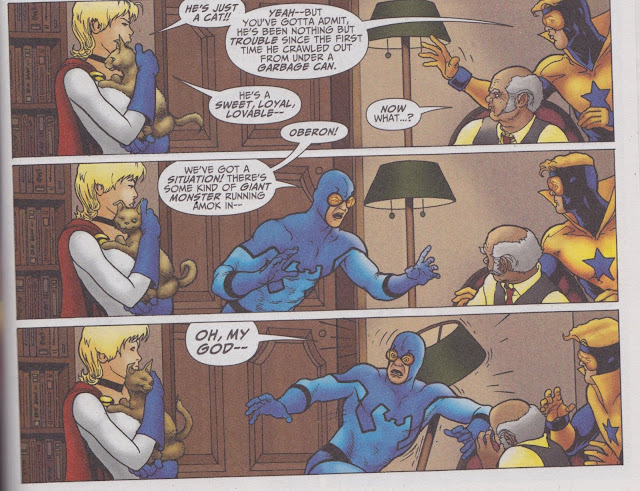It was some time ago when the powers that be at DC decided to roll out the Vertigo Crime series of original graphic novels. I remember being excited about the concept of comics that were being published to stand on the shelves at big bookstores and really blend in with the prose offerings. More “secret comics” that look like any other book until you crack open the cover. But then I think there were some mixed reviews on the first offerings in the series so I wound up pretty much forgetting about these comics.
I hear so much about Chris Samnee that I really wanted to pick up Area 10. So this was my introduction to Vertigo Crime, and I thought it was a strong effort.
Adam Kamen is a cop who is on the trail of a killer only referred to as “Henry VIII” for the way he leaves his victims at the scene without their heads. During the investigations Kamen has an encounter with a fanatic wielding a screwdriver as a weapon. It winds up going right through the cop’s skull. After this happens things get a little strange. Kamen’s life isn’t threatened by the attack and he starts getting premonitions of things that might happen in the future. He is having a hard time focusing. He finds out about why people have been mutilating their skulls for millennia...he has gained the fabled Third Eye.
Area 10 plays out like a police procedural book, but certainly dabbles in supernaturalism. It’s so nice to have a comic that runs for 180 pages and doesn’t have any little fake climaxes or recaps because it’s reprinting a collection of periodical comics. Area 10 was made to be a true comic “book” telling a lengthy story.
There’s plenty of detail in Area 10 to make you really get into the characters. Adam Kamen has been through a lot already, and the drastic effects of his on-the-job injury make life a whole lot more complicated for him. Kamen is willing to do whatever it takes to solve the mystery of the killings. At first the Third Eye confuses him and even scares him, but he knows that it’s his only chance for ultimately making things better.
I’m glad that I found Area 10 because it finally introduced me to a couple of names I’ve been hearing a lot about over the last few years. Christos N. Gage is a writer who has done things for both of the Big Two, but I guess they were never things that passed through my radar. I’m not sure how much bearing this Vertigo Crime OGN would have on his superhero work, but at least now I know that the man is good at something! I’ll have to try and dig up some more.
Chris Samnee has a wonderful website in which he posts a lot of art. iFanboy really loves him and that’s where I first heard about him. It was just another case in which I didn’t really know where to look to find his work. Now I know why Samnee is held is such high esteem. He did such a great job with a shadowy black and white style. His storytelling is strong and he accomplishes so much with subtlety. There’s plenty of tension in the pages of Area 10, and I’m willing to say that more than half of it is because of the artist’s contributions rather than the writer’s.
Well, it’s not surprising to me that after coming across Area 10 I’m now much more interested in the Vertigo Crime line as a whole. At this point there’s almost a dozen novels in the series. Looking forward to trying out a few more...





































